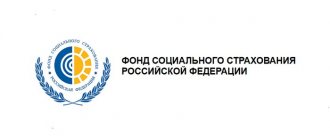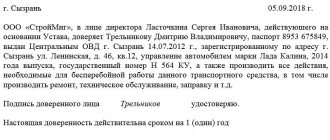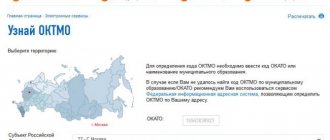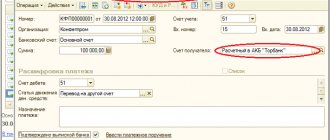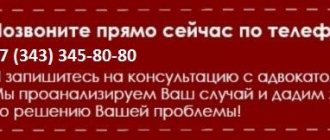What is a receipt for PKO
A receipt for a cash receipt order (CRO) is a document confirming the receipt of money, usually within an organization from a depositor. The contributor can be an employee, founder or another company. The receipt is not a separate piece of paper, but a detachable part of the PKO.
The order is considered the primary documentation that is used to record cash transactions. Accepting money and filling out the PQS is regulated by relevant legislative acts.
Organizations and individual entrepreneurs usually use a unified order form, which is provided by the Bank of the Russian Federation.
Sample of filling out a receipt
Similar articles
- Account cash warrant
- The procedure for conducting cash transactions in 2016-2017
- Journal of registration of incoming and outgoing cash orders
- Receipt cash order
- Receipt cash order: form and sample for filling out 2016-2017
Document functions
The PKO receipt is provided to the person who deposited a certain amount into the cash register. Thus, the paper confirms that the monetary transaction was completed. It is issued immediately after filling out the PQS. The paper contains the same information as in the order.
A person receives it in the following situations:
- when paying for company services
- when forming a share in the authorized capital of an organization
- when returning the balance of money that was issued for reporting
Receipt documentation acts as confirmation of the transaction at the cash register. The responsible accountant or cashier is responsible for preparing the reports.
When compiling the paper, a unified sample called KO-1 is used.
Is a cash receipt required?
A check and a PKO receipt are different documents that must be drawn up separately from each other. The depositor uses the receipt to conduct his own accounting and reporting. A cash register receipt is a paper that is generated by a cash register. A receipt is created for buyers as confirmation of payment for a specific unit of goods or service, for the receiving party - as confirmation that revenue has been received.
If the depositor is a legal entity, then after depositing funds he is simultaneously issued a check and a receipt. For ordinary individuals who do not conduct business activities, only a check is issued. For persons who contribute to the authorized capital, only a receipt is issued.
Receipt form for receiving money from an individual
- full name of the recipient organization (a mandatory condition is that it belongs to the bodies of the Ministry of Finance of the Russian Federation and the Federal Treasury);
- TIN, KPP contains the name of the government agency and tax office that controls this payment. The names of these bodies are indicated in abbreviated form. In some cases, the TIN is not filled in;
- in the “OKATO code” cell the code of the municipality by which incoming funds are mobilized is indicated. This information is taken from the corresponding classifier;
- name, details, bank identification code, beneficiary account. Column "corr. "account" is not filled out if the service is provided in Russian banks;
- in the “payment name” cell the name of the tax, state duty, fine (for example, a fee for issuing a passport) is indicated;
- Filling out the budget classification is mandatory. Filling out the receipt incorrectly will make it impossible to determine the purpose of the payment. This code consists of 20 characters and is taken from the country’s budget revenue classifier.
Sberbank notification receipt. Form PD-4 is a bank document that is used when legal entities or individuals make payments for state duties, fines, penalties, taxes, as well as other non-cash payments. The receipt form is unified, approved by a special letter in 2007, which was prepared jointly by Sberbank of the Russian Federation and the Ministry of Taxes.
Please note => Taking fingerprints for identification is paid or not
Is it possible to confirm the fact of payment?
The receipt is issued to the other party for record-keeping purposes, so it will likely not be sufficient to prove payment if a dispute arises. In any case, companies or individual entrepreneurs cannot issue their client a receipt instead of a check. If one organization pays another company for goods, it must require a receipt.
In some situations, confirmation of payment may be carried out using a strict reporting form.
About receipts for individual entrepreneurs in the video:
Registration procedure
Papers are filled out by an accountant or cashier directly when accepting funds. Registration is carried out as follows:
- Fill out the PKO (left side of the paper). It indicates the document number, company name, date of preparation, amount, basis for contribution and details of the contributor (initials of the person or name of the company, if we are talking about an organization).
- The information is duplicated on the receipt (right side of the paper).
- The accountant's signature and the organization's seal are placed on the PKO and its detachable part.
Registration can be done in writing, by filling out a printed sample, or electronically, by entering data on a computer. After filling out the order electronically, the order is printed and signatures are placed on it.
The filling process is quite simple. Basic information about the organization is entered, the reasons for depositing money and information about the donor are indicated. It is worth noting that before signing an order, you will need to add it to a specialized journal in which all transactions are noted. The procedure does not take much time when using a ready-made sample.
Standard forms of BSO: form BO-4
STANDARD FORM:
BO-4
Standard form BO-4
Form BO-4 is not mandatory for use. Each organization or individual entrepreneur that uses strict reporting forms must develop its own BSO for its work. But, of course, you can take the old BO-4 form as a basis, simplifying it and adapting it to your needs.
The original form consisted of three parts - “Work order - order”, “Receipt. A table for calculating wages is printed on the reverse side of the Work Order.
This form is filled out by the receiver in two copies.
Work order (form code according to OKUD 0790008) - the first copy - consists of an order work order, the first receipt stub and a passport for the order, which is separated from the work order and filled out by the cutter or artist. On the front side of the order passport, the dimensions of the customer are indicated, and the silhouette of the product is drawn; on the reverse side, a full description of the product is made, and changes made at the request of the customer are recorded. The order passport plays the role of a technological document and provides control over the movement of the order in production. On the reverse side of the work order, wages are calculated for the performers for the work performed.
Receipt (form code according to OKUD 0790007) - the second copy of the form - consists of a receipt, a second receipt stub, a warranty card and a material requirement for the order.
The work order and receipt are filled out by the receiver on the basis of the order passport. After filling them out, the receiver draws up the receipt stubs on lines 1, 2, 5 when accepting the order. The first stub of the receipt is torn off from the order and transferred to the cash desk for registration in the “Statement of Cash and Sold Services”.
After making payments on the basis of the work order, a tear-off coupon “Order Requirement” is filled out, located on the second copy of the form, which, together with the work order, is transferred to production and serves as the basis for writing off material assets from the warehouse.
The receipt is returned by the customer upon receipt of the finished product. The receiver makes changes to it according to the order and cost, fills out the second counterfoil of the receipt on lines 3, 4, 6, tears off this counterfoil and transfers it to the cash desk, where it is registered, like the first counterfoil of the receipt in the “Statement of Cash and Sold Services” , but already at the moment of implementation. Along with the finished product, the customer is given a warranty card.
Form BO-4 was used both when making an advance payment for an order and when making a subsequent form of payment.
BSO samples found: 3
How to receive funds
Reception is accompanied by compliance with the following procedure:
The cashier accepts cash one by one, carefully counting each bill- money is recalculated so that the depositor can see all the manipulations
- The PKO is signed only if the amount specified in the order corresponds to the funds actually received
Acceptance of finance from third-party organizations or from one’s own employees is carried out by order.
The procedure is carried out according to predetermined regulations. You can learn more about the procedure by studying legislative acts and regulatory documents.
If, after recalculation, a shortage of deposited funds is discovered, the cashier offers to deposit the missing portion to the depositor. If an excess is detected, the cashier returns the excess portion. If the depositor refuses to compensate for the shortfall, the procedure is cancelled.
How to create a PKO in 1C, watch the video:
Document numbering
When maintaining accounting records, you need to number the reporting papers correctly. The order is numbered in accordance with the rules adopted by the organization. Numbering may begin again annually or quarterly. There are currently no acts strictly regulating numbering. The main thing is to ensure timely deposit of money into the cash register.
The number of each individual document is entered in the cash book. At the initial stage of the company’s work, it is necessary to decide on the rules for maintaining numbering independently. A common standard is to update the numbering annually. Throughout the year, the count is kept in chronological order.
Is it possible to get a copy
If necessary, it is possible to issue a duplicate of the order and receipt. The duplicate is drawn up as a copy, the appropriate signatures are placed on it and it is indicated that the paper is a duplicate.
Under normal circumstances, the PKO is issued in a single copy. If lost, it is not possible to restore it. If you want to insure against the loss of an important copy of the order, you can create a duplicate. A copy is usually created at the initiative of one of the parties.
The paper is stored in the organization along with other accounting documentation. Orders must be retained for 5 years. After this, they can be sent to the archive.
Opened form
- “Details of the payment recipient” - it indicates the name of the payment and enters data related to the payment recipient.
- “Payer details” - here the payer’s last name, first name, patronymic, his address and, if necessary, his personal account number are filled in in detail.
- “Payment” - in the fields of which you need to enter information directly related to this payment: “payment amount”, “payment amount for .
The payment document of form PD-4 is intended for making payments by Clients in cash and consists of two parts - “Notice” and “Receipt”. The payment document is used when accepting payments on cash registers and PTK. To confirm payment acceptance, a KKM or PTK stamp is affixed to the payment document (notice and receipt).
31 Dec 2021 marketur 198
Share this post
- Related Posts
- Benefit according to list 1 in 2019
- Is it possible to carry a child in the front seat?
- How much does a Nasvay package cost?
- Compensation for disabled people of group 2
